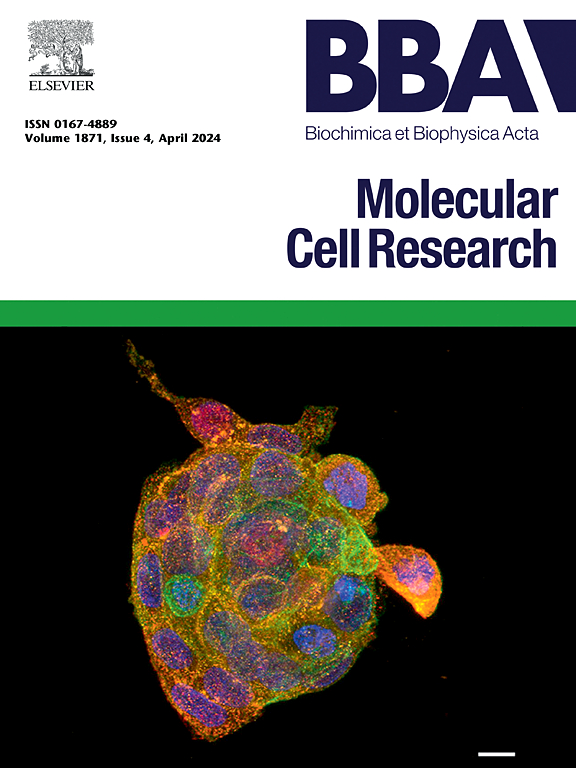本机质谱和其他生物物理技术在铁硫簇蛋白质及其组装研究中的协同作用。
IF 4.6
2区 生物学
Q1 BIOCHEMISTRY & MOLECULAR BIOLOGY
Biochimica et biophysica acta. Molecular cell research
Pub Date : 2024-10-21
DOI:10.1016/j.bbamcr.2024.119865
引用次数: 0
摘要
从蛋白质和其他大分子的鉴定到结构和构象研究,质谱方法的应用彻底改变了生物化学。保持蛋白质原生结构的原生质谱(MS)是一个发展迅速的领域。尤其是在研究金属蛋白时,非共价结合的辅助因子在电离后仍保持结合。此类金属蛋白包括那些含有铁硫(FeS)簇的金属蛋白,尽管它们很脆弱且对氧气很敏感,但它们一直是原生质谱应用的重点,因为质谱能够准确监测质量变化,从而揭示簇的化学变化。在此,我们回顾了本机质谱应用的最新进展,这些进展与更多传统生物物理方法的应用数据一起,产生了有关 FeS 物种的大量信息,不仅为 FeS 簇蛋白质本身,也为它们的组装提供了关键的机理认识。本文章由计算机程序翻译,如有差异,请以英文原文为准。
Synergy of native mass spectrometry and other biophysical techniques in studies of iron‑sulfur cluster proteins and their assembly
The application of mass spectrometric methodologies has revolutionised biological chemistry, from identification through to structural and conformational studies of proteins and other macromolecules. Native mass spectrometry (MS), in which proteins retain their native structure, is a rapidly growing field. This is particularly the case for studies of metalloproteins, where non-covalently bound cofactors remain bound following ionisation. Such metalloproteins include those that contain an iron‑sulfur (Fe![]() S) cluster and, despite their fragility and O2 sensitivity, they have been a particular focus for applications of native MS because of its capacity to accurately monitor mass changes that reveal chemical changes at the cluster. Here we review recent advances in these applications of native MS, which, together with data from more traditionally applied biophysical methods, have yielded a remarkable breadth of information about the Fe
S) cluster and, despite their fragility and O2 sensitivity, they have been a particular focus for applications of native MS because of its capacity to accurately monitor mass changes that reveal chemical changes at the cluster. Here we review recent advances in these applications of native MS, which, together with data from more traditionally applied biophysical methods, have yielded a remarkable breadth of information about the Fe![]() S species present, and provided key mechanistic insight not only for Fe
S species present, and provided key mechanistic insight not only for Fe![]() S cluster proteins themselves, but also their assembly.
S cluster proteins themselves, but also their assembly.
求助全文
通过发布文献求助,成功后即可免费获取论文全文。
去求助
来源期刊
CiteScore
10.00
自引率
2.00%
发文量
151
审稿时长
44 days
期刊介绍:
BBA Molecular Cell Research focuses on understanding the mechanisms of cellular processes at the molecular level. These include aspects of cellular signaling, signal transduction, cell cycle, apoptosis, intracellular trafficking, secretory and endocytic pathways, biogenesis of cell organelles, cytoskeletal structures, cellular interactions, cell/tissue differentiation and cellular enzymology. Also included are studies at the interface between Cell Biology and Biophysics which apply for example novel imaging methods for characterizing cellular processes.

 求助内容:
求助内容: 应助结果提醒方式:
应助结果提醒方式:


